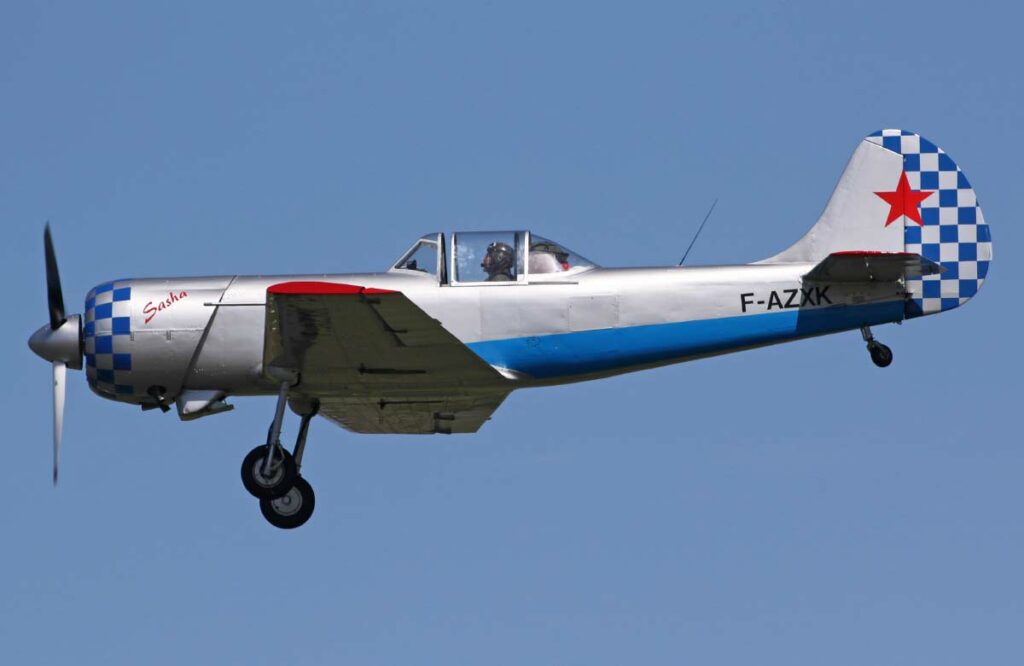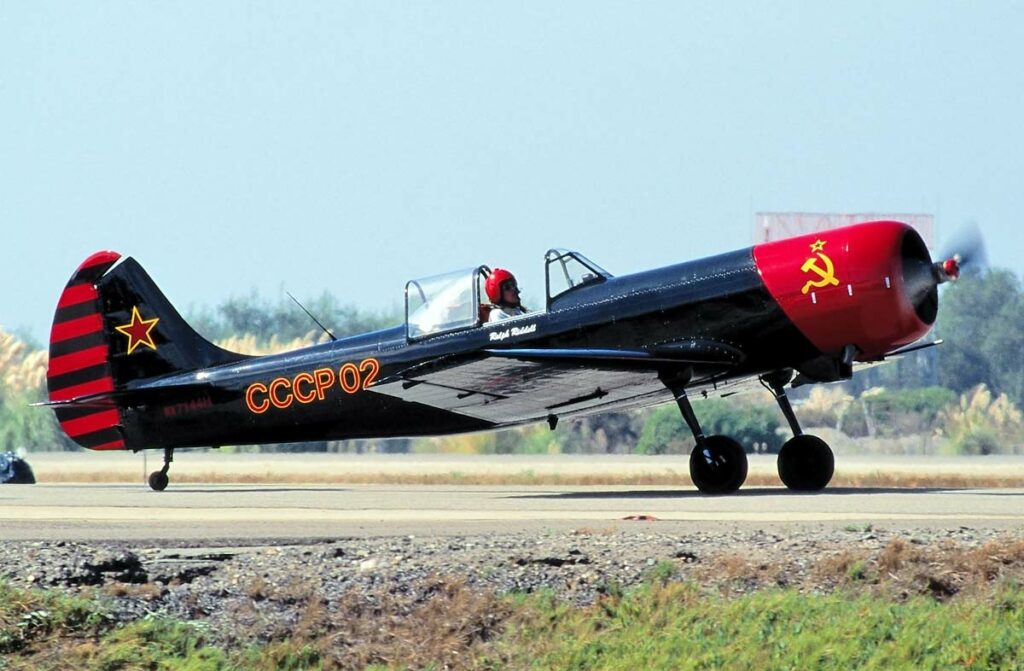Yakovlev Yak-50: A robust single-engine, single-seat aerobatic aircraft developed in the USSR, famed for its agility and power in aerobatics.
In brief
The Yak-50 is an all-metal, low-wing, single-seat monoplane designed primarily for aerobatics. It features a retractable main landing gear and a fixed tailwheel. Powered by a Vedeneyev M-14P radial engine, it offers 360-450 horsepower, depending on the model variant. With a wingspan of 9.5 meters and a length of 7.8 meters, it supports a maximum speed of 400 km/h and a service ceiling of 4,000 meters. Notably, its design emphasizes light weight and high maneuverability, accommodating extreme aerobatic routines with a rate of climb up to 3,145 feet per minute.

History of the Development of the Yakovlev Yak-50
The Yakovlev Yak-50 was conceived as a successor to the Yak-18, aligning with the Soviet Union’s need for an advanced aerobatic aircraft during the 1970s. Designed by the Yakovlev design bureau, the development aimed to produce an aircraft that could handle rigorous aerobatic maneuvers while providing a training platform for military pilots. Its first prototype took to the skies on June 25, 1975, following the design tradition of its predecessors but incorporating significant enhancements in power and agility to meet competitive aerobatic standards.
Design of the Yakovlev Yak-50
The aircraft’s construction is primarily of an all-metal monocoque structure with fabric-covered control surfaces to minimize weight. It has a wingspan of 31 feet 2 inches and a wing area of 160 square feet, which contributes to its agility and responsiveness in flight. The radial engine is fitted with a two-bladed propeller, optimized for aerobatic performance. The landing gear configuration contributes to a streamlined profile yet presents challenges in ground maneuverability due to visibility constraints.
Performance of the Yakovlev Yak-50
With a maximum speed of 250 mph and a cruising speed of 170 mph, the Yak-50 competes favorably in its class. Its aerodynamic design and powerful engine allow it to perform with a climb rate that excels in quick ascensions during routines, vital for aerobatic competitions. The aircraft’s performance in the Soviet aerobatic scene was distinguished, securing the World Aerobatic Champion title twice, which underlines its capabilities compared to other contemporary aerobatic aircraft.
Variants of the Yakovlev Yak-50
The primary variant of the Yak-50 is tailored for single-seat aerobatics, with changes in engine versions from the M-14P to the more powerful M-14PF and M-14R, offering up to 450 horsepower for enhanced performance. Each variant retained the core design features but adapted power outputs to accommodate different performance needs in aerobatic competition.

Military Use and Combat of the Yakovlev Yak-50
The Yak-50 was extensively used as a military trainer within the Soviet Union, preparing pilots for advanced combat maneuvers and aerobatic performance. Its robust design allowed for rigorous training routines, pushing the aircraft to its structural limits. Although it was not employed in combat, its contribution to pilot training was substantial, influencing numerous military aviators throughout its service period. The Yak-50 was phased out of military use as newer trainers like the Yak-55 emerged, but it remains popular among private flyers and aerobatic enthusiasts worldwide.
–
The Yakovlev Yak-50 exemplifies a successful blend of aerobatic agility and robust engineering, marking its significance in aviation history not only as a competitive aerobatic aircraft but also as an influential military trainer. Its legacy continues in the hands of private owners and aerobatic pilots, maintaining its status as a beloved aircraft in the aviation community.
Back to the Trainers section.